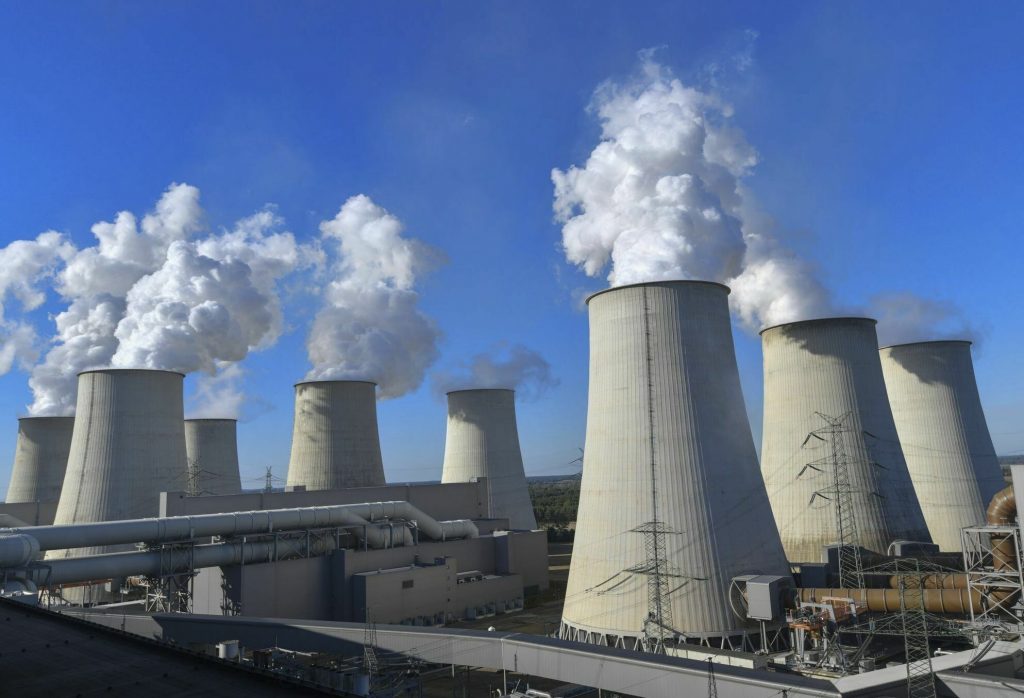 The G7 has come to a close in Germany with a new offer for close collaboration with developing countries to boost clean energy and resilience through two new initiatives. G7 leaders have committed to achieving a fully or predominantly decarbonized electricity sector by 2035, recognizing that emissions from coal power generation is the single biggest cause of global warming.
The G7 has come to a close in Germany with a new offer for close collaboration with developing countries to boost clean energy and resilience through two new initiatives. G7 leaders have committed to achieving a fully or predominantly decarbonized electricity sector by 2035, recognizing that emissions from coal power generation is the single biggest cause of global warming.
The G7 heads of state are sending an important signal: The transformation to a climate neutral economy remains a key priority. The fossil era is about to end. The future belongs to investments into clean, safe and reliable energy, infrastructure and transportation. However, it will be all about implementation. Strengthening energy efficiency, scaling up renewable energy and green hydrogen will be key for making industry transformation work.
G7 countries consume close to 1 billion tones of thermal coal annually (source: EIA). This is about 16% of global thermal coal consumption and about the same as the total thermal coal consumed by India, Indonesia, and South Africa combined. Phasing out coal power in G7 and EU member countries would avoid 1.9 billion tonnes of CO2 emissions annually, which is more than the combined total CO2 emissions from all southeast Asian countries (source: World Bank 2018).
What was agreed upon at G7?
At the G7 ministerial meeting held between energy, climate and environment ministers of the G7 countries and the EU, it was agreed to “predominantly” decarbonise the power sector by 2035. While the Ministerial G7 communique does not explicitly define what “predominantly” entails, we could infer from the rest of the communique language that the agreement intends to limit global temperature rise to 1.5c. IEA’s net zero pathway maps out two milestones towards achieving power sector decarbonisation by 2035 for advanced economies (page 116, IEA Net Zero by 2050). which means Phase out of all unabated coal power plants by 2030 in advanced economies and by 2040 for other regions. As well as Abated gas power in G7 countries is limited to just 2% of global capacity between 2030 to 2050. The Electricity sector in 2035 would still have some abated thermal capacity in operation.

However, as suggested by the IEA report, abated thermal power capacity opportunities are concentrated in China for coal-fired thermal power capacity and the US for gas-fired thermal power capacity due to limitations in regards to space for retrofits, and geographical requirements for CO2 storage.
Therefore, to understand the implications, we assume that G7’s decision to ‘predominantly’ decarbonise the power sector by 2035 implies a coal phaseout by 2030 and about 2% abated gas power operational capacity between 2030 – 2050.
How does G7’s decision impact CO2 emissions?
While actual CO2 emissions depend on various parameters, Global Energy Monitor tracks global annual emissions from coal power plants. The total annual CO2 emissions from operational coal power plants in G7 countries and EU member countries is about 1.9 bn tonnes. This is more than the
combined total 2018 CO2 emissions of all Southeast Asian countries.
Where does G7 stand in global thermal coal consumption?
According to EIA data, G7 and EU member countries consume about 1 billion tonnes of thermal coal annually. About the same as the total annual thermal coal consumed by India, Vietnam and South Africa combined. This is about 16% of the global thermal coal consumption.
GEM estimates 40.5GW of net coal capacity retirements in G7 and EU member countries. According to Ember’s Global Electricity Review 2022 report (page 17), global coal power capacity utilization in 2021 was estimated to be around 55%. Considering that Japan has a high coal capacity utilization rate, we estimate that G7 and EU member countries would have a 60% coal power capacity rate. At 60% utilisation rate for about 40.5GW of retired coal capacity and with EIA’s 0.51 tonne /MWh, we estimate coal retirements in 2020 and 2021 lead to a decrease of about 108 million tones of annual thermal coal consumption.
The long term outlook for coal remains negative. The top 10 coal power generating countries that collectively account for 90% of the global coal power generation are committed to the mid-century net zero emissions goal.
A recent study published by Australian National University finds that China’s coal imports will shrink by as much as 49 per cent by 2025 due to its decarbonisation drive and policies to boost domestic energy security.With close to a billion tonnes of annual thermal coal demand set to disappear by 2030 due to G7’s power sector decarbonisation efforts, coal exporting countries such as Australia, Indonesia, South Africa, Colombia, and Russia need to plan for transition.
The US has not adopted any domestic policy that ensures a 2030 coal phaseout or 2035 power sector decarbonisation due to domestic political opposition.Japan’s total electricity demand has been declining after peaking in 2010 and its coal power generation share has been declining since 2015. In 2021, coal power supported about 30.6% of the total electricity demand by generating 280.4 TWh. If Japan’s electricity demand remains the same instead of following the historic trend of declining
since the 2010 peak, 19% coal power generation in 2030 would mean a 37% (90 million tonnes) decline in thermal coal consumption based on 2021 data.
Indian Scenario:
The G7 has only expressed willingness to negotiate with India and other countries for the Just Energy Transition Partnership (JETP). So in that negotiation we need to ask for what we need rather than try and get sucked into pressure from the G7. In fact before conversations like the JET-P had come up at COP, we were all talking about how, for example, District Mineral Funds could be used in the clean energy transition. It is going to be a combination of both domestic funding and international money coming in only as a gap. India needs to minimise the need for international support and rely a lot more on our own efforts.
Deepak Sriram Krishnan, Associate Director, WRI India’s Energy Program says that -” India can try and negotiate the transitions related to thermal power plants as well as coal mining. A second area of transition, which is of critical importance for us is our industrial sector, especially the MSMEs. Given that a significant number of them are exporting to markets like the G7 or are part of supply chains of companies, which may have their headquarters in the G7 countries. It would also be important to try and negotiate for financial flows and technology transfer for the industrial sector decarbonization as well. In the Energy and Environment Ministers’ Communiqué on May 27, 2022 the G7 had brought out their industrial decarbonisation agenda where they had spoken about international cooperation for technology co-deployment.”
Industrial decarbonisation for India is of critical importance given that a significant number of Indian industries are exporting to markets like the G7 or are part of supply chains of companies, which may have their headquarters in the G7 countries. It would also be important to try and negotiate for financial flows and technology transfer for the industrial sector decarbonization as well. In the Energy and Environment Ministers’ Communiqué on May 27, 2022 the G7 had brought out their industrial decarbonization agenda where they had spoken about international cooperation for technology
co-deployment.
Also Read : Russia-Ukraine war tops G7 summit discussions
Also Read : A fetus & children knock on the doors of a South Korean Court
Mayank Agarwal, Contributing Editor, Mongabay says that- The climate debate is shaped by business and geopolitics. The outages that happened last year post monsoon and what is happening since the Ukraine War started as a reminder of how deeply intertwined everything is in the energy market. So if you look at the developed world, how they are reshaping their oil and gas policies and coal to ensure their energy security, and this is something that India also has to ensure.
According to Vaibhav Chaturvedi, Fellow, Council for Energy Environment & Water (CEEW) -G7 dragged its feet on climate action and commitment – “Cooperation on climate change mitigation and adaptation was one of the important issues for the G7 discussions. India’s ambitious mitigation targets warranted a solid commitment from the G7 countries on climate finance for India, through a Just Energy Transition Partnership. The outcome from the summit on this front has been disappointing. Looks like rich countries are again dragging their feet, rather than acting fast to support India’s ambition. India will have to continue to ramp up pressure on the developed world to deliver fast on climate finance through various channels.”
 Jubilee Post News & Views
Jubilee Post News & Views





